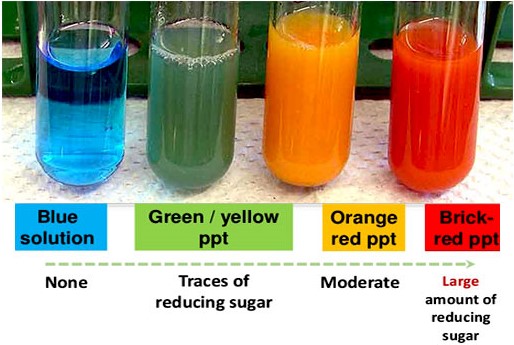It is important to note that identifying the presence and level of food macromolecules is critical in order to understand the molecular composition of a food product. The key macromolecules or macronutrients were carbohydrates, lipids, and proteins. The emphasis was put on the various tests, which measured each component.
Materials and Methods
The given assessment’s method was focused on three major tests, such as Benedict’s Test, the Sudan Test, and the Biuret Test, to analyze carbohydrates, lipids, and proteins, respectively. The materials included corn, bread, potato, rice, and pasta as carbohydrate sources, eggs, beans, tofu, nuts, and meat as protein sources, and cheese, ice cream, butter, lard, and oil as lipid sources.
Results
The result was that Benedict’s Test identified simple carbohydrates through a reduction process. The level of monosaccharides and disaccharides was seen through coloration due to potassium thiocyanate’s reaction with simple sugars, which ranged from blue to red, as shown in Figure 1 below (Aryal par. 1). The Sudan Test was used for detecting the lipids in a food product. It used the Sudan dye, such as Sudan III, which was a sudanophilic and fat-soluble reagent reactive with glycerol or fatty acids. The Biuret Test was utilized for identifying proteins, which used the Biuret reagent (Rochelle salt, sodium hydroxide, and hydrated copper sulfate). Copper sulfate reacted with peptides turning the coloration to purple, where the intensity determined the level of proteins.

Discussion/Conclusion
In conclusion, Benedict’s Test showed large amounts of simple sugars in corn, bread, potato, rice, and pasta, and the Sudan Test revealed positive staining in cheese, ice cream, butter, lard, and oil. High concentrations of protein (purple color) were detected with the Biuret Test in eggs, beans, tofu, nuts, and meat.
Work Cited
Aryal, Sagar. Benedict’s Test- Principle, Composition, Preparation, Procedure and Result Interpretation. 2019. Microbiology Info. Web.